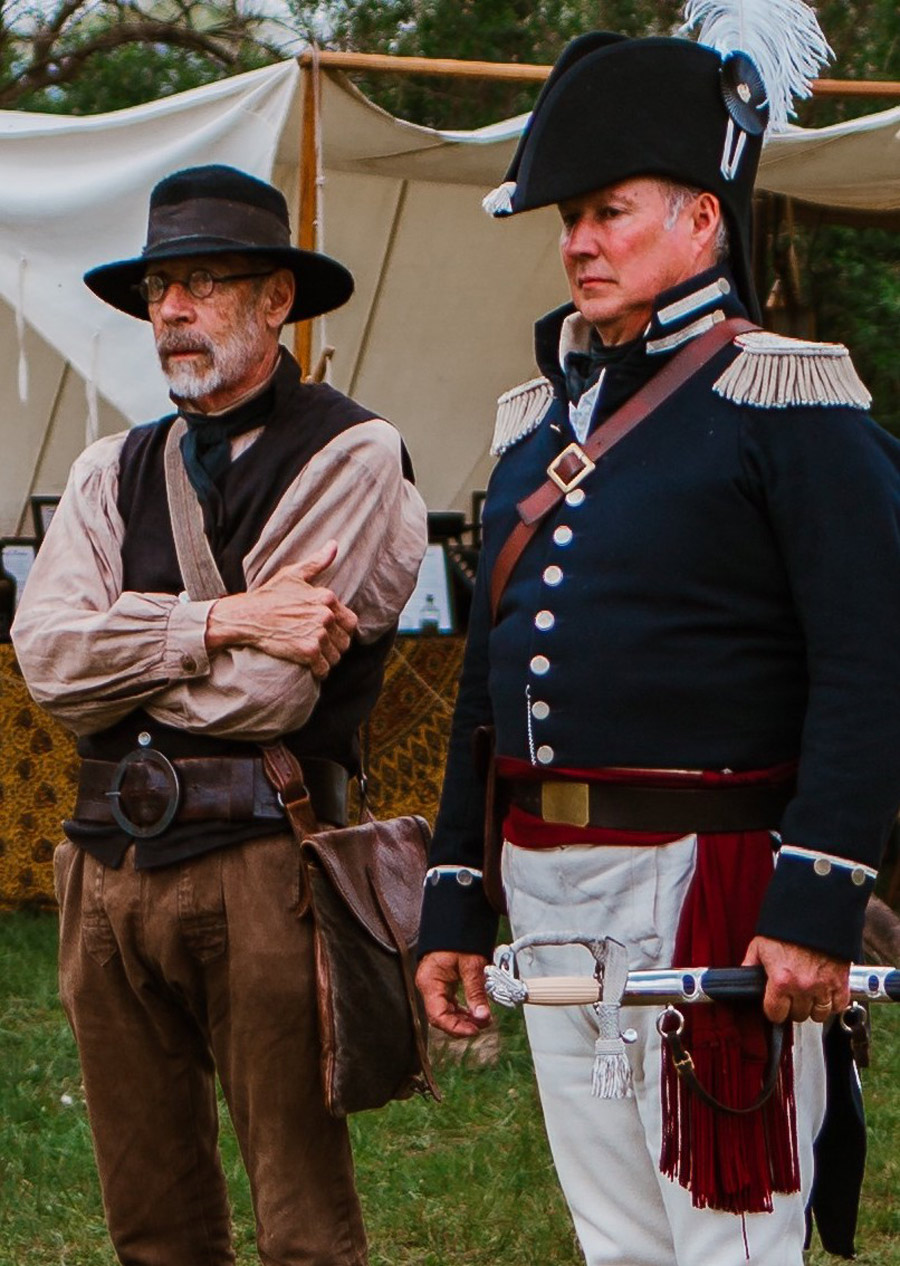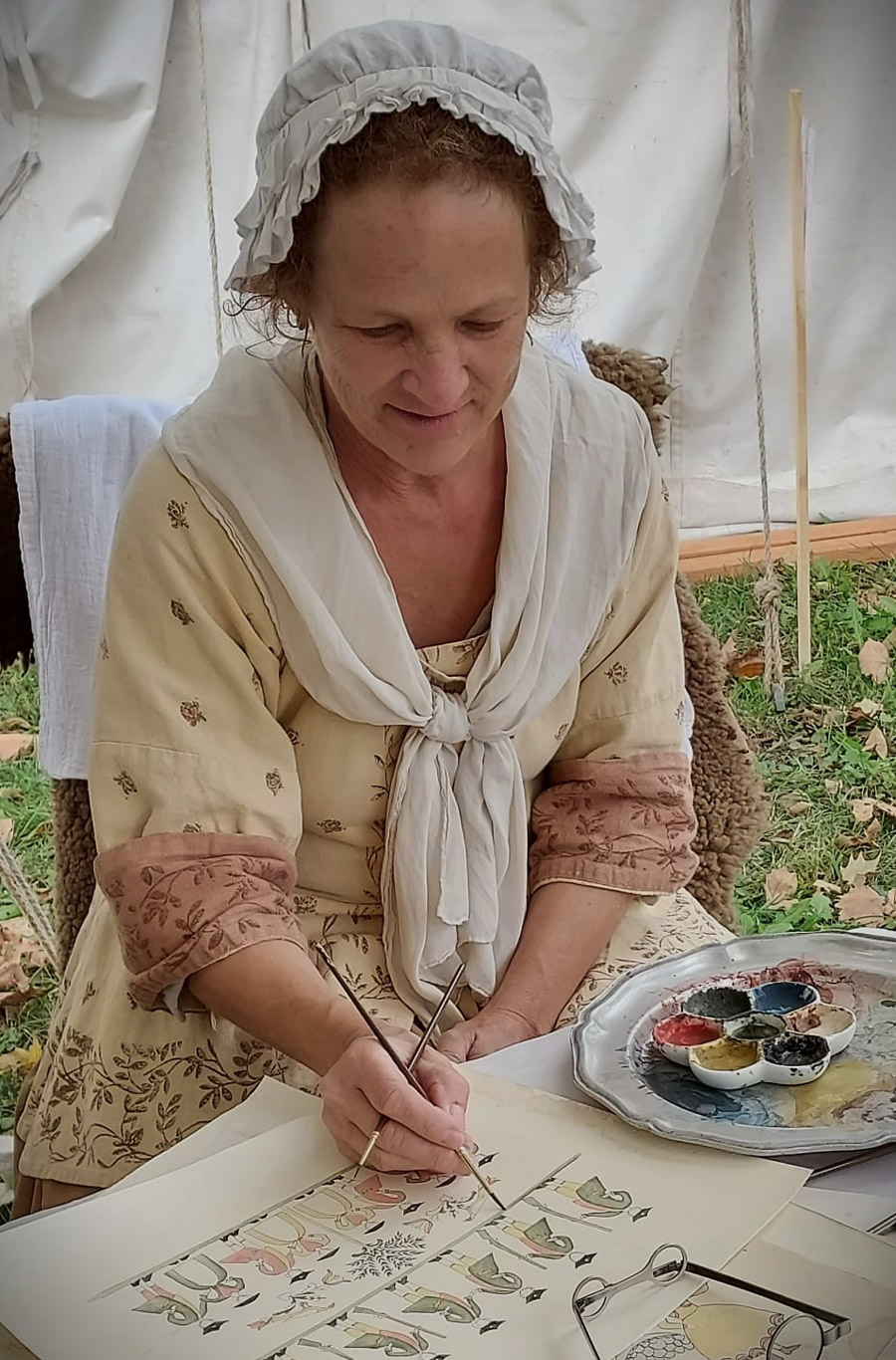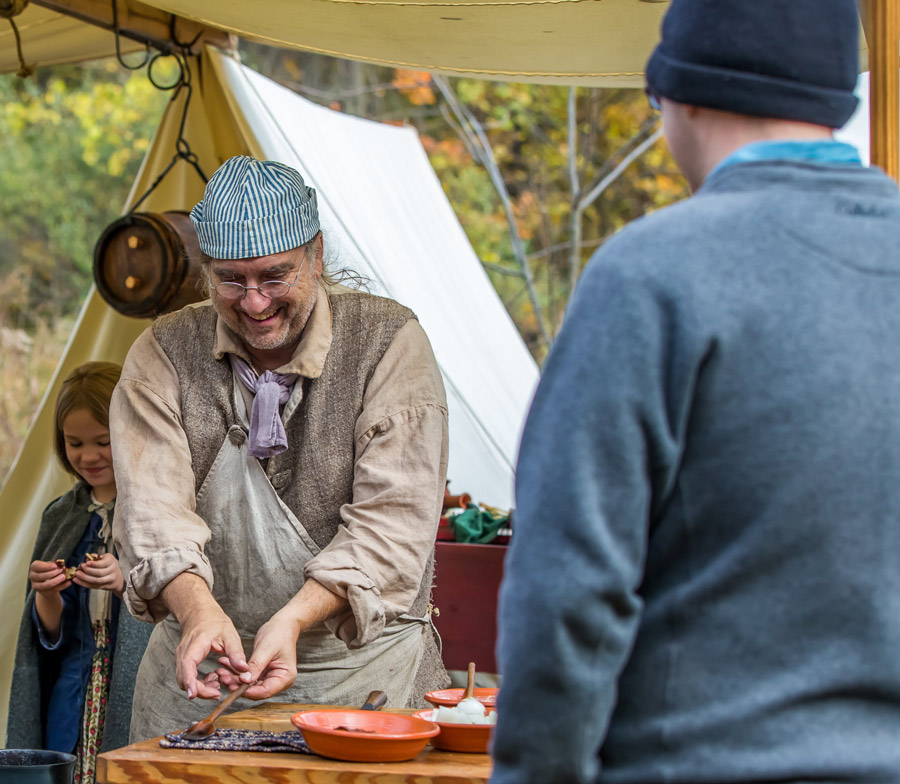Five Medals Living History Festival May 4-5 Near Ligonier

Re-enactors move a team of oxen at a Five Medals at The Trace living history event near Ligonier. Photos provided.
News Release
LIGONIER — Where do you get to experience British, colonial American and French military camps, a Potawatomi Native village, cannon and muskets firing, and 18th century artisans and shopping opportunities, all in one location?
Five Medals at The Trace, coming up in May, is a living history educational experience geared toward the entire family, allowing all to become immersed in the area’s history. The event spans the middle 1600s up through the War of 1812.
Five Medals at The Trace features nearly 200 re-enactors and demonstrators, including one-of-a-kind shopping opportunities with early American merchants, live colonial music, penny whistle workshops, a period-correct Punch & Judy Show, blacksmithing, tinsmithing, woodworking, flint-knapping, rope-making, open-fire cooking and baking, soap-making, paper filigree, watercolor artistry, millinery, colonial beekeeping, natural fabric dyeing, spinning and wool carding, basket weaving, pottery, an oxen team, and even a chocolatier, all ongoing throughout the event.
Black powder flintlock and artillery demonstrations also are held. Visitors can interact with participants in the woodland Native, French civilian and military, British military, and colonial/U.S. military encampments.
This year’s Five Medals at The Trace takes place from 9 a.m. to 5 p.m. Saturday, May 4, through 10 a.m. to 2:30 p.m. Sunday, May 5, with Friday, May 3, earmarked as school visitation day. The event is held at Stone’s Trace, a privately owned historical park located just south of Ligonier at the intersection of U.S. 33 and SR 5. Visitors will find woodlands-to-grasslands transition areas, several log cabins, shopping opportunities and early American crafts and food options. Parking is available at at West Noble High School.
Five Medals at The Trace is presented by Five Medals Living History Inc., a 501(C)3 nonprofit organization.
History Of Five Medals
On Aug. 3, 1795, at Fort Greenville, in what would become Ohio, a treaty was signed. Present were several whose names may be familiar to people from the region: Anthony Wayne, Little Turtle, William Henry Harrison, Blue Jacket, William Wells, White Pigeon, William Clark, Topinabee, Meriwether Lewis, Winamac and a highly regarded chief of the Elkhart River Band of Potawatomi named Wonongaseah, or Wa-weeg-she, as his name was inscribed on the treaty next to his mark.
Wonongaseah is roughly translated as “Five Coins” or “Five Medals” and, combined with the numerous peace medallions he had accumulated, the chief became known simply as “Five Medals.” He signed at least six treaties of either peace or land cession.
His village was located on the Elkhart River, northwest of present-day Ligonier. He traveled with Little Turtle to Philadelphia in 1796, where he met President George Washington, and in 1801 to Washington D.C., where he delivered an oration to President Thomas Jefferson. He worked tirelessly to improve relations with the westward expanding European-Americans and made several efforts to bring modern agricultural practices to his and other local villages.
The Battle of Tippecanoe on Nov. 7, 1811, ignited the entire region and Five Medals, under the influence of Tecumseh, found himself at the Siege of Fort Wayne in September 1812. General Harrison’s troops relieved the siege and immediately conducted retaliatory raids upon area villages. Five Medals’ village was partially destroyed in September of 1812 and was attacked again in June of 1813. Five Medals and his people removed themselves to the Detroit area for the remainder of the war.

Re-enactor Brian Dyer as a Native American.

Re-enactors Jim Nelson and Thad Stern at the festival.

Re-enactor Valerie Skinner models period clothing and painting techniques.

Re-enactor Michael Dragoo offers a food demonstration.

Re-enactor Tom Strous shows the work of an old-fashioned blacksmith.
